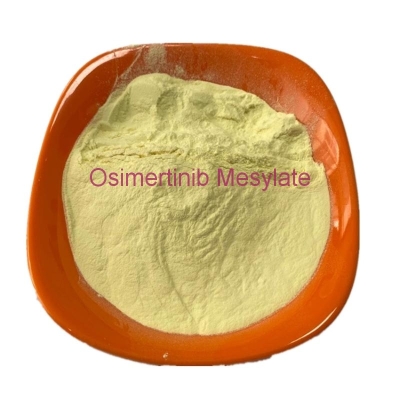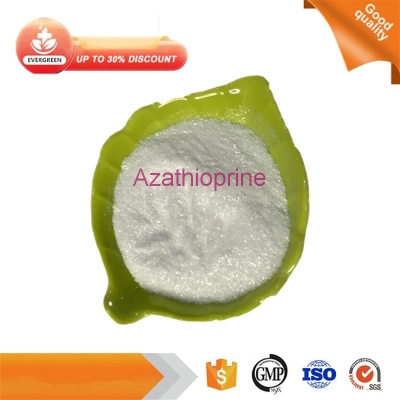-
Categories
-
Pharmaceutical Intermediates
-
Active Pharmaceutical Ingredients
-
Food Additives
- Industrial Coatings
- Agrochemicals
- Dyes and Pigments
- Surfactant
- Flavors and Fragrances
- Chemical Reagents
- Catalyst and Auxiliary
- Natural Products
- Inorganic Chemistry
-
Organic Chemistry
-
Biochemical Engineering
- Analytical Chemistry
- Cosmetic Ingredient
-
Pharmaceutical Intermediates
Promotion
ECHEMI Mall
Wholesale
Weekly Price
Exhibition
News
-
Trade Service
Multiple myeloma (MM) is highly heterogeneous, and accurate prognostic assessment and risk stratification are essential
for accurate treatment of MM.
In June 2022, the European Oncology Collaborative Group officially released R2-ISS, providing clinicians with a more accurate prognostic staging tool to facilitate the implementation
of precision treatment.
Professor Li Fei of the First Affiliated Hospital of Nanchang University was invited to share the highlights and updates
of R2-ISS.
The European Myeloma Network (EMN), supported by the HARMONY project in the European Union, collected data from more than 10,000 newly diagnosed MM(NDMM) patients1 to develop and validate a new scoring system, R2-ISS, based on the revised International Staging System (R-ISS) for the purpose of improving risk stratification
.
R-ISS is a commonly used risk stratification system for MM patients, which integrates serological indicators, and at the same time increases the evaluation indicators such as serum lactate dehydrogenase (LDH) level and genetic information, and divides patients into low-risk (I), medium-risk (II) and high-risk (III) stages, and patients with different stages show obvious differences
in survival.
However, R-ISS has certain limitations, with about 62% of patients classified as R-ISS stage II, and this group of patients may have different survival conditions
.
In addition, studies have shown that 1q gain/amplification (1q+) is an independent adverse prognostic factor for NDMM, but R-ISS does not take this factor
into account.
Therefore, the R2-ISS proposed on the basis of R-ISS will perform more precise stratification
of NDMM patients.
The study is based on the International Staging System (ISS), del (17p), LDH, t(4; 14), 1q+ and other important predictors are built scoring systems, and each predictor is assigned a value
according to its impact on the overall lifetime (OS).
Using a cumulative score, patients (n=2226) were divided into four risk groups based on the total score, and the progression-free survival (PFS) and OS prognosis of each group could be clearly distinguished (Table 1; Figure 1
).
Table 1 Survival outcomes of patients with R2-ISS stages and different stages
Fig.
1 PFS and OS curves of patients with R2-ISS stages
Both R-ISS and R2-ISS staging systems are able to predict patient outcomes
well.
But compared to R-ISS, R2-ISS is better at stratifying a large number of patients with medium-risk NDMM (Figure 2
).
R2-ISS patients can be further subdivided into R2-ISS II, III, and IV groups with significantly different OSs, with median OS of 111, 71 and 57 months for patients in the three groups of training concentration, respectively, and median OS of 89, 56 and 27 months
for patients in the three groups of patients in the verification concentration, respectively.
This shows that R2-ISS can segment patients with stage II R-ISS and accurately assess prognosis
.
Figure 2 Prognostic stratification of R-ISS and R2-ISS staging systems
The highlights of the study mainly include the following aspects: (1) R2-ISS uses a more flexible cumulative scoring method to stratify patients, which is convenient for renewal when new prognostic factors appear in the MM field; (2) Compared with the concentrated distribution of patients with stage II of R-ISS, the proportion of patients with stage I-IV NDMM in R2-ISS was 19.
2%, 30.
8%, 41.
2% and 8.
8%, respectively, of which patients with stage I/II and stage III/IV each accounted for 50%, which made it easier to conduct intergroup analysis in follow-up studies; (3) The incidence of 1q+ in NDMM patients is about 40%, and the inclusion of independent adverse prognostic factor 1q+ into the staging system can cover the risk factors
of more patients.
1q+ is a common cytogenetic abnormality in patients with NDMM and has a significant impact on
OS.
In one study, 133 patients with NDMM were included, and FISH testing showed that 42.
1% of patients had 1q+ and had median OS of 66 months and no 1q+ patients
, respectively.
In addition, the median OS in patients with both 1q+ and del(1p) was only 13 months, and 1q+ plus del(1p) was an ultra-high risk factor
for poor prognosis.
Multivariate analysis results show that 1q+ can be used as an independent poor prognostic factor, but its adverse prognostic effect depends largely on correlation with other cytogenetic abnormalities2
.
Based on the clinical value of 1q+, the International Myeloma Working Group (IMWG), Mayo Myeloma Stratification, and Risk-Adjusted Treatment (mSMART) 3.
0 all serve as important reference factors
for risk stratification.
Patients with MM with 1q+ tend to have a poor prognosis and are in urgent need of effective treatment
.
The latest data released at the 2022 ASCO Annual Meeting show that with the combination of daretoulumab (D-VRd) in addition to VRd, the negative rates of minimal residual disease (MRD), complete remission (CR) and MRD, and persistent MRD negatives in all subgroups were improved
.
In the subgroup of cytogenetically high-risk patients with revision of 1q+, the MRD negative rate in the D-VRd group after consolidation therapy, after 12 months of maintenance therapy, and 24 months after maintenance therapy was significantly higher than that in the VRd treatment group
.
In the 1q+ subgroup, the proportion of patients with a negative duration of MRD after D-VRd treatment ≥ 6 months and ≥ 12 months was higher3
.
The D-VRd protocol brings lasting and deep remission to MM patients with 1q+ (Table 2; Figure 3
).
Table 2 Sustained MRD negative rates for each subgroup of D-VRd/VRd scheme
Figure 3 MRD negative rates of each subgroup of D-VRd/VRd scheme
Achieving a negative MRD is of great significance for patients with cytogenetically high-risk MM to overcome high-risk cytogenetically poor prognosis
.
Studies have shown significant differences
in PFS benefit in patients with MRD-positive R-ISS I, II, and III.
In MRD-negative patients, on the other hand, there was no significant difference in PFS benefit, even with different R-ISS stages (Figure 4)4
.
Under the staging system of R2-ISS, whether achieving a negative MRD can overcome the high-risk cytogenetic poor prognosis has yet to be further investigated
.
Fig.
4 PFS in patients with different MRD states under the R-ISS stage
For transplant-appropriate MM patients, daretosumab plus standard therapy significantly increases MRD-negative rates
.
In the CASSIOPEIA study5, the rate of MRD negative rates after 1 year of induction therapy with the daretuzumab plus VTd (D-VTd) regimen was significantly higher (50.
1% vs 23.
1%)
compared with the VTd regimen.
The results of the GRIFFIN study6 showed that after 24 months of maintenance therapy, the proportion of patients in the D-VRd group who achieved MRD-negative compared with the VRd group was also higher (63% vs 47%)
.
In addition, after 4 courses of induction therapy using D-KRd protocol 7, the MRD negative rate suitable for transplant MM patients can reach 42%.
In addition to patients suitable for transplantation, daretosumab plus standard therapy can also lead to MRD negative in MM patients who are not suitable for transplantation
.
Data from MAIA Study 8 showed that after a median follow-up of 56.
2 months, MRD negative rates for the DRd regimen and the Rd regimen were 31% and 10%,
respectively.
Data from the ALCYONE study9 showed that after a median follow-up of 40.
1 months, the MRD-negative rates for the D-VMP regimen and the VMP regimen were 28% and 7%, respectively (Figure 5).
*V: bortezomib, R: lenalidomide, T: thalidomide, K: carfezomime, d: dexamethasone, D: daretoulumab, M: muffalan, P: prednisone
Figure 5 MRD-negative rate in studies related to the combination of daretoulumab and standard regimen
summary
As a new and simple prediction algorithm, R2-ISS can classify more accurately than R-ISS, especially for the segmentation of patients with stage II R-ISS;
Staging patients using a more flexible cumulative scoring method to facilitate renewal when new prognostic factors emerge in the MM field;
In addition to the risk factors included in R2-ISS, other factors should be considered in the clinic, such as patient frailty status, negative MRD, circulating tumor cells, etc.
;
There is also a lack of sufficiently long follow-up in the treatment regimen of the new drug, and the large sample of R2-ISS prediction model validation, and some studies have shown that MRD negative can overcome the poor prognosis of R-ISS staging; Data from the GRIFFIN study showed that the D-VRd protocol significantly improved the MRD-negative rate
compared with the VRd protocol.
References
[1] D'Agostino M, et al.
J Clin Oncol.
2022 May 23:JCO2102614.
[2] Rafael Rios-Tamayo, et al.
2020 EHA.
Abstract EP1012.
[3] Cesar Rodriguez, rt al.
2022 ASCO.
Abstract 8011.
[4] Paiva B, et al.
JCO201901231.
[5] Loiseau HA, et al.
2021 ASH.
Oral 82.
[6] Kaufman JL, et al.
2020 ASH.
Oral 549.
[7] Luciano Costa, et al.
2020 EHA.
Abstract EP928.
[8] Facon T, et al.
Lancet Oncol.
2021 Nov; 22(11):1582-96.
[9] San-Miguel JF, et al.
Blood.
2020 Nov; 136(Sup 1):18-20.
EM-110952 Content Approved Date :9/23/2022
For the reference of medical pharmacy professionals only, reproduction and dissemination are strictly prohibited
This article is for medical, scientific communication purposes only and may refer to products and indications that have not been approved in China
Janssen does not support or encourage the use of any unapproved drugs
Poke "Read the original article" to see more







